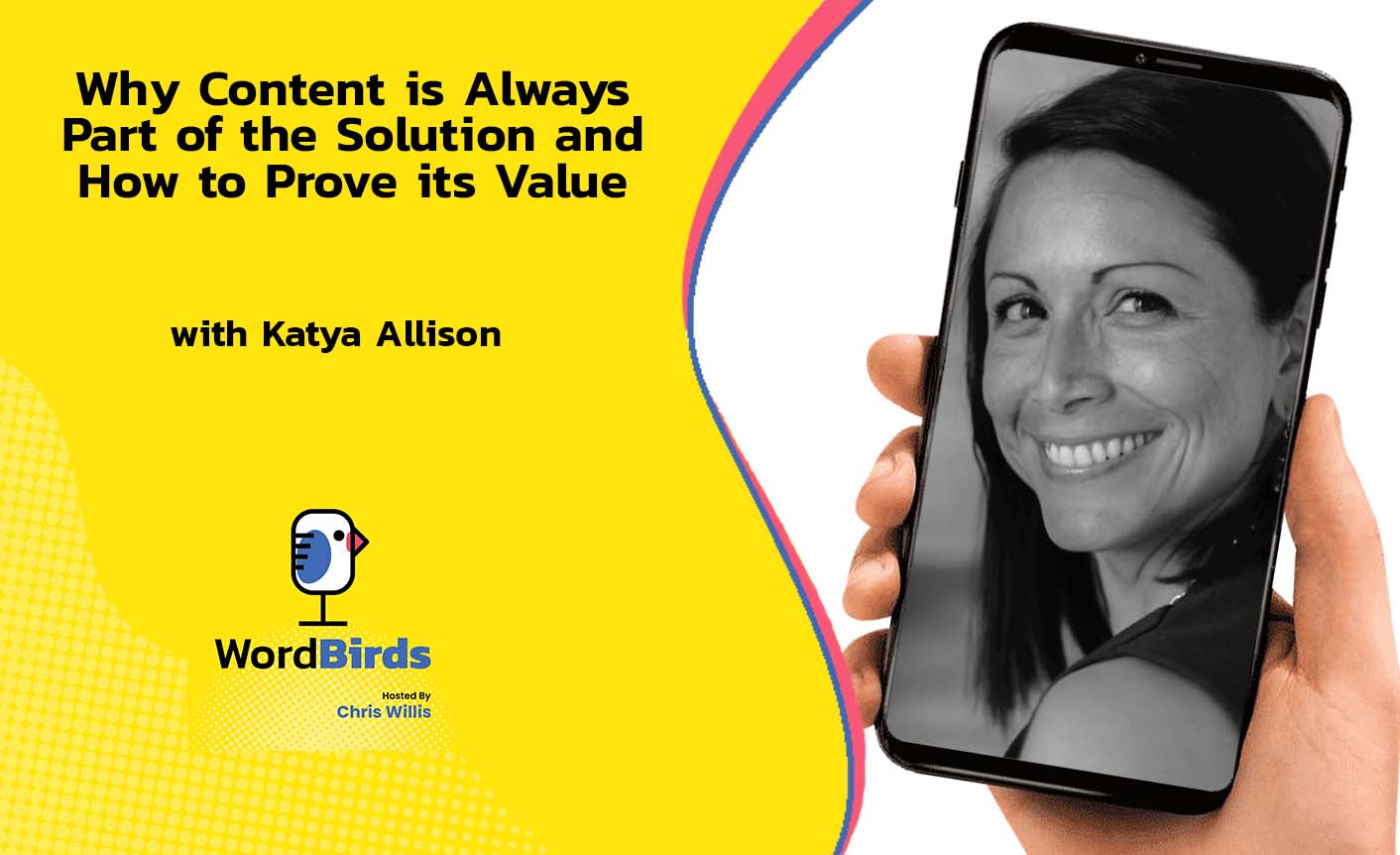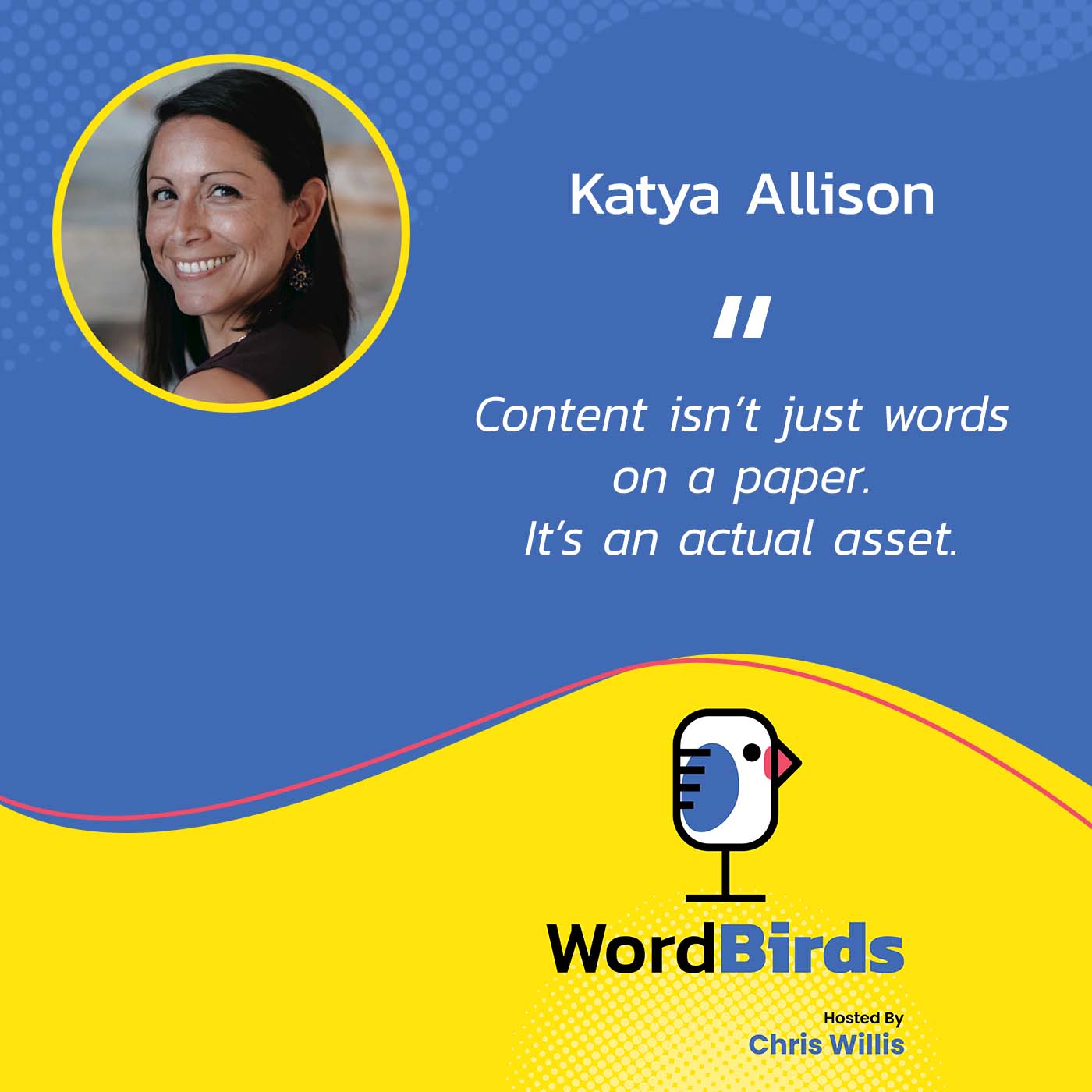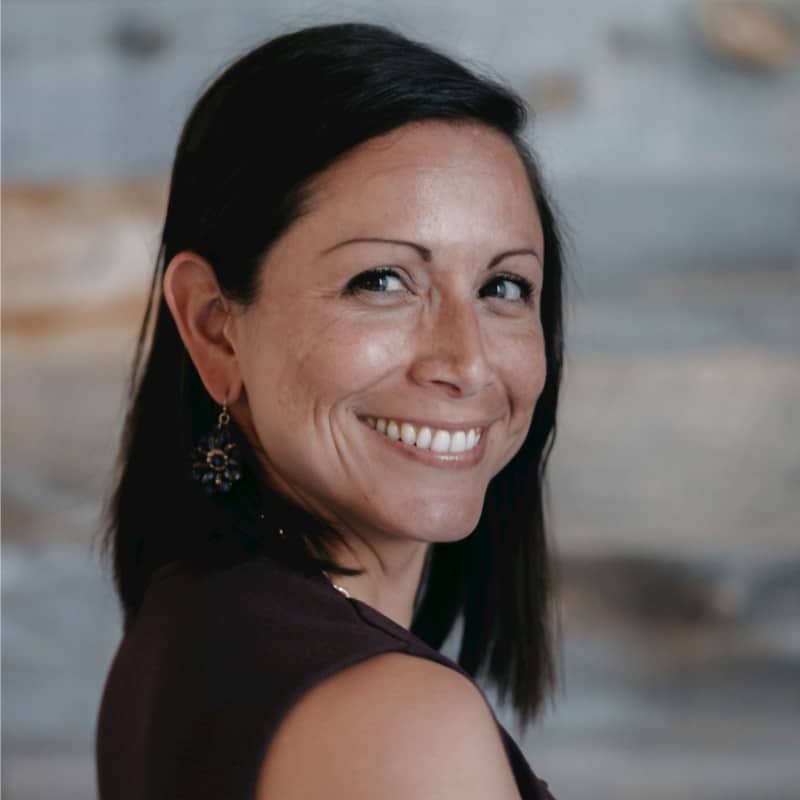Why Content is Always Part of the Solution and How to Prove its Value, with Katya Allison

Content is always part of the solution because if you’ve got a question, content gives you the answer. This is the principle that today’s guest lives by in her career in the influencer marketing space.
Katya Allison is the Director of Community at a company called GRIN, a SaaS company that leads the creator management space. In this conversation, Katya leads us to a more expansive explanation of what content really is and how it drives your business, not only in many ways, but in virtually every aspect. She also tells us about GRIN and why she has always loved it, first as a customer, and now as part of its leadership team. Tune in for more!
Watch the episode here
Listen to the podcast here
Read full episode transcript
On the show today is Katya Allison. Katya is the Director of Community at a company called GRIN in the influencer marketing space. We are going to talk about what that means, the type of content that’s coming out of the influencer marketplace, how creators and influencers are driving business and how you would measure the success of those types of initiatives.
I learned a lot in this episode. I think you will, too. Let’s sit back and get some insight from the flock.
Katya, welcome to the show. Super excited that you are here.
I’m excited to be here. Thank you so much for having me on.
I am thrilled to have you here. I want to talk a little bit about a quote that I heard from you. You believe that, “Content is always part of the solution.” What do you mean by that?
I don’t know if I can be succinct with this, so I’m going to say it how I’m going to say it. Content is always part of the solution because if you’ve got a question, content gives you the answer. The format for which that content is given is what’s different. If I’m at work and trying to learn a little bit more about leadership, I’m going to Google something or find a blog that’s going to give me like, “Top 10.” I love those listicles.
If I’m trying to further my education in something else, maybe I go to Barnes & Noble and get a book on it. I’m going to read something. That’s content. If I’m going to purchase running shoes, I’m going to go to Amazon and look at the reviews because I want to make sure that I know everything that I need to know about that particular running shoe. That review, that’s content.
What I mean is that most people don’t think of content as everything but it solves all the questions.
I’m in the content space. When people talk about content, it’s a problematic word because it means a lot of things to a lot of different people. I have partners in the industry that are saying, “Don’t say content. Figure out a way to say like, ‘Written word.’”
I don’t mean the written word because the content is driving Alexa. Content is the script that drives the commercial that you are watching on TV. It’s on the Billboard. It’s in the chatbots. It’s everywhere.
The definition you have of content is actionable content. Content that solves a problem and that differentiates it from things like product content and company overview content. As much as I wish there’s a place in the world where people were coming to work in the morning and desperately searching for my company, I know in my heart that they aren’t.
They’re searching for an answer. I need to make sure my content, whether it’s about my company, my solution, or our thought leadership, is answering those and it’s solving a problem for somebody.

This idea of company-free actionable thought leadership content to drive business is important. Do you think that, in general, businesses get this or are they undervaluing the type of content that you are talking about?
They’re undervaluing but not in a negative way. They’re not even thinking of it. I would love to be able to go back to something you said in regard to content being those words as well, too. One of the important pieces of content that I left out is the imagery behind it. Those videos like you said. Social media is huge from a content perspective and in that respect as well, too.
If I’m working on my house and I’m seeking to be inspired, I’m looking for an image. I’m not looking for words. Content fills all of those things. Most brands are thinking of solving for the eBook, the webinar, the thing that I’m going to do. I need something that’s going to drive people. When you think of content beyond words, they’re undervaluing it because it does solve everything. It’s what brings people in. Think of the guy in the corner that’s waving that sign dressed as a pickle. I don’t know if you have that guy where you are at.
I’m going to look for him.
We’re all going to look for the pickle guy. That sign, in a way, is content. It’s driving you there. That’s the way that I view it. It’s breaking out of these traditional molds from a content perspective, thinking, “It’s just the words on the paper.” It’s an actual asset. It’s all of these things that are driving people to your business. Your website, that’s a huge content asset. People don’t think of it as that. They think of it as, “This is my website. I’m either going to sell something on here or sell that eBook. My eBook is the content.” I don’t know if that makes sense.
It absolutely does if you look at what you specifically do in content. On the traditional route, content for you comes from a completely different type of producer. You’re dealing with creators and influencers. Give the readers an idea of what it is that you do with that crowd to build influencing content.
For full transparency, I’m at GRIN. I’m the Director of Community at GRIN. GRIN is software as a service. We’re the number one creator management platform. What that means is that we are ensuring the brands who are out there can connect with creators across the space. Let’s first define what a creator is because most people think that it’s a fluff word. It’s one of those industry buzzwords.
A creator is anybody that’s creating any type of content. An influencer is someone who is also creating content that has influence over their community, and they’re typically using social media.
A creator, when we’re talking about that, is someone who isn’t necessarily on social media. It is someone that’s a podcaster. It could be a journalist as well, too. It could be an athlete. They have a sense of their community and are pushing out content, whatever it is that looks like. In my space, it’s trying to find those creators that are going to educate and entertain the audience that you are trying to pull in.

The whole purpose of your business is to match these creators and influencers with the right businesses to create value for the business.
Sort of. I do love, though, that you said match because that’s the opposite of what we do. What we do is create an environment where a brand is free to not just find the creators that they want to work with but be able to arm them with the tools so they can spend time building out those relationships. The content that works is authentic content.
If I’m trying to get you, as a podcaster, to say something about my brand, in particular. You have to have been completely bought into my brand to say, in a word-of-mouth conversation that you have with someone over dinner, “You have to get GRIN. This is the software you need because of XYZ.” You know it in and out. I want you to be able to be the storyteller.
The only way that you do that is if you’ve built a good relationship with me and I’ve educated you on my story. You can’t do that if you are like, “I will talk about GRIN.” You have a very surface-level understanding of it. Our tool, in general, allows brands to have those deep relationships with creators so those creators can develop that authentic content and be the storytellers for a brand.
GRIN allows brands to have deep relationships with creators so those creators can develop authentic content and be the storytellers for those brands. Share on XI’m not going to fancy myself an influencer.
You are. You are a creator.
I’m involved with several brands in an influencer relationship. I’m thinking about what you’re saying and how the brands that I work with have done it. There are questions that I have. I will help you move this product into the audience I have, but if they ask me hard questions, I can’t answer them. My crowd is going to ask me things that eventually I’m going to fall flat with because we don’t have that interaction between the brand and me.
They’re asking me to do something, and I’m doing it because there’s some incentive to do it, not because we have a tight relationship. Companies could absolutely benefit from that type of relationship building. To make sure that I’m not just helping them but that I’m invested in and hyped up about it and I know all the answers. I know why this is the right thing at this moment to be using. That would be helpful.
I’m going to call you out on this because you finished telling me before we got on the air that you are into CrossFit. You’ve got a community that you are engaging with. I would imagine that you’re a very healthy person. You probably use either a supplement or shaker pre-workout of some sort. Would that be accurate?
That would be accurate.
I would be very interested because you have that community. What is the pre-workout that you can’t live without? I want to know that because I see you. I see that you’re a part of this community. I see that you’re working out. I’m going to trust you. When you tell me what your pre-workout is, I guarantee you have a brand. I guarantee you have a process. If I’m part of your community, I don’t know if I can swear on this but I will be able to smell the bullshit if you don’t use that pre-workout. That’s what creators bring to it. That’s the authenticity.
That was a good directional guess. That’s exactly the area that I’m talking about. I have a product that I enjoy and use every day. It surprises you to know that it’s not the product that I’m involved with.
That makes me sad.
It’s a bit of a misalignment because if you ask, I’m going to sell you, of course, C4 all day long. Why? “I like the way it makes my ears buzz. It got beta-alanine in it. Beta-alanine makes you vibrate a little bit. It’s fantastic. Makes you all hyped up for your workout, let you go longer, and workout harder.” I can get very enthusiastic about that. Products that I’m involved with, I can say, “This is neat. Try it.” This is going to get me in trouble.
I also love that you said C4 because that’s what my kids use as well, too, and they’re total bodybuilders. They live by that.
It comes in flavors like Starburst. How can you lose?
Pull me into the flavors because I’ve tried pre-workout. They’ve pushed me to try pre-workout. Do you see that type of conversation? That’s content. Being a storyteller, that’s content. That’s ultimately what you want because it’s building that enthusiasm. This is now full circle because the original question that you asked me was, “Do you think that brands undervalue this?” Yes, I do.
The reason that I think that is because it’s hard to attribute this conversation to the sale of that C4 pre-workout that I’m going to get at Target. I get it. The C-Suite has to be able to see that one-for-one but they’re not part of this conversation. How do you quantify the value of a conversation that we had for that particular brand?
A creator is anybody who is creating any type of content. An influencer is someone who is also creating content that has influence over their community. Share on XI have an idea but I don’t know from experience. How do you? I feel like you must know that.
It’s looking at qualitative and quantitative. Honestly, this is my hill. You had asked me before. It has to be qualitative and quantitative. You have to be able to show how many eyeballs you got on a particular brand’s name. To me, eyeballs are also the same as ears as well, too. If I’ve seen you, then I’m more than likely going to be talking about you.
It’s breaking down this fourth wall of attribution when it comes to marketing and being able to define whether or not there’s that metric that you can give someone. It’s taking a look at how many people are authentically talking about your brand, which is maybe not necessarily quantifiable. It’s also taking a look at your community. Have you built a community behind your brand? There’s a value behind that. There are great brands out there that are crushing it and understand the value of that community.
I’m thinking of a protein supplement company called GHOST. There are a lot of people out talking about GHOST. To your point, it’s hard to track all of that but they built a community and a hub for that community. They’re siphoning everybody back. Once you go to Target, GNC or a vitamin shop and buy your product, they’re bringing you back.
They’re able to essentially see the volume of people that are coming into their community through any channel. To some extent, you have to trust the process. In terms of the way that we advertise, in my business, I don’t see a one-to-one relationship with an advertising dollar and a result. The way that I do with a lead gen dollar and a result. I’m looking in the sales funnel.
Am I more likely to get a meeting because more people know who we are? Am I more likely to convert into further stages of the funnel because more people in the business know who we are?
The measurement isn’t super satisfying. It’s not a direct connection. I can’t see. I spent $1, I got $1.50. I can see that over time, sales velocity is increasing. It’s working. When you can tie that back to, “I understand the reach that I had because I know where I’m advertising and what their audience looks like.” You start to be able to triangulate to see where you are getting success. It’s a little fuzzy but it’s there.
It’s a little fuzzy. It’s the halo effect is really what it is. What we’ve talked about in regard to attribution is that one-to-one. What I’m talking about is one to many. That one to many is a rise of all the things. It’s building that brand equity, which essentially builds out your brand loyalty, which then is your community as well, too. You’ll see everything pick up once you’re doing that and investing in it.
My goal in life is to educate on that. It’s not a one-to-one attribution. I get it. You can also still track that from a creator standpoint. You’ve got discount codes and affiliate links. I can see how much traffic is coming in from social. Those are great one-to-ones. You also have to take a look at the one-to-many. Is your website traffic going up? Is your community building?
Do you have more positive sentiment coming from those engagements that you have? Are people clicking a little bit more on your ads because you are using that creator’s content? Instead of whatever photoshoot you had of that particular product. When you look at all of these things, all of them are attributed to having that authentic creator relationship.
It takes so many touches now to do and buy anything. It’s delivered to you on Instagram. The first thing you do is go and look elsewhere and try and find people that are using it. This content becomes important because it’s not a, “I see it, I click, and I buy it,” in most cases. It’s a validation process. Where influencers and creators play into that is that you find people that you resonate with and that you trust, and then you make those purchases. Without them, you are blind. That’s difficult.

The advantage of leveraging creators as well, to your point, is that it does take many touches. Every generation engages differently when it comes to being a consumer and a shopper. A Gen Z doesn’t shop in the same way as a Millennial, as the same way as a Gen X. If I am attracted to a Gen X audience, and that person is telling me how I want to consume it and the information that I need.
When you look at someone who has an audience that’s more Millennial-based, they have different needs. When you’re leveraging creators, you’re able to speak exactly to your audience. You found, and I don’t want to say the head leader because that sounds strange but you found the spokesperson a little bit. One of the spokespeople for a particular group or audience. You didn’t have to do that as a brand.
You’ve now employed many people at a very small, minimal lift. You can have a mix of different creators as well, too. You can use your celebrity creators as, “These are my eyeballs and my ears. They’re going to get me that top-of-funnel. I’ve got those middle-of-funnel people that are continuing to educate the audience that I’m trying to reach on why they should purchase.” You’ve got the bottom-of-funnel ambassador community that you have that is going to essentially drive that sale down. It’s a complete creator mix. I’m obviously very passionate about this.
For some reason, all I can think of is I wonder how Tide felt about the whole Tide pod thing eating them. That’s creator content. People bought products. I don’t know if that was the point.
I would definitely say it was probably not what the point was.
I don’t think they were using your platform. At least not that we’re ever going to talk about. You’re a community leader at a software company. I would be interested in how you’re leveraging technology to drive your content process.
The way that I’m leveraging technology is honestly to remove the busy time of trying to wrangle everything and putting it all in one place. Like I had said at the top of our conversation, it’s about establishing and having those relationships. I want to know about the community members. I spoke with someone on the phone. I said, “How is your family? I know you guys had COVID a few weeks ago. How’s everything going?”
I wouldn’t know that if I’m busy trying to update a spreadsheet. Where am I going to keep all of that relationship information? I use technology to minimize the busy work of staying connected and being connected and keeping all of those mental notes. I also leverage technology as a way to communicate with my community as well.
We’ve got an online community. We have a Slack community. We’ve got Discord as well, too. Internally, with the people who are involved, our customers at GRIN, it’s about creating these virtual and in-person meetups. I have to be able to leverage technology to be able to reach out and connect with them. It’s a little bit of two folds. It’s minimizing the busy work so I can have those relationships. It’s also being able to connect in, sometimes virtual and sometimes in-person, ways to that community.
What’s your favorite piece of software that you started using in 2022?
I’m naturally going to say GRIN but I didn’t start using it in 2022. I was a GRIN customer, so I’m totally and completely solved. I was a customer, and now I work here because this is definitely the community. I don’t know that there’s any new software that I’ve started using this year. I am loyal. Whatever I started using at the beginning of my career is something that I definitely push. I completely realized that.
I started using Starfish for CRM. I don’t use it anymore.
You’re right. Not at the beginning of my career. I’ve definitely found the ones that I love and those are the ones that I’m loyal to. GRIN is one of them because we drink our own champagne. I used my tool to consolidate all of the information that we were talking about. Asana is huge. Anybody who’s reading this knows me obsessed with Asana. These are things that I absolutely love for our employee advocacy group. We use Oktopost as well, too. That has been such a great platform for us. These are software that I love.
Katya, thank you very much for being on the show. This is great and actionable. People are going to get a lot from this if people are looking to continue this conversation. How are they going to find you?
They can find me on LinkedIn. It’s @KatyaAllison. As you said, the woman with two first names. Katya Allison, you can absolutely find me on LinkedIn. Message me, it may take me a few days to get back to you but I always get back.
Thank you very much. I hope you have a great rest of your day.
Thank you so much.
Important Links
About Katya Allison

Katya Allison is an experienced marketer with a background in communications, digital marketing, content development, and influencer strategy. She has spent time as the COO of a digital marketing agency and cut her teeth in the corporate world as Business Communications Manager.
She is currently the Director of Community at GRIN and host of both the GRIN Gets Real podcast and Brands Talking Influencers fireside chat series. She uses her extensive expertise in leveraging creators to build impactful full-funnel marketing strategies to support brands to thrive in the age of the Creator Economy.
Are you ready to create more content faster?
Schedule a demo to see how content governance and AI guardrails will drastically improve content quality, compliance, and efficiency.
The Acrolinx Team




